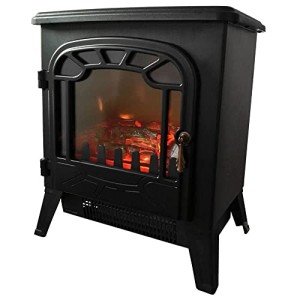Why Do So Many People Would Like To Learn More About Fireplaces?

Fireplaces in the UK: A Comprehensive Guide
Fireplaces have long been an important part of British homes, using both aesthetic beauty and functional heat. As the weather condition turns chilly, the attraction of a cozy fire beckons, changing any living space into a sanctuary. In Fireplace UK , we will explore the different kinds of fireplaces readily available in the UK, considerations for setup, upkeep tips, and answers to often asked questions about fireplaces.
Types of Fireplaces
When picking a fireplace for a UK home, a number of options are offered, each with distinct features and advantages. The following table summarizes the main types of fireplaces popular in the UK:
| Fireplace Type | Description | Pros | Cons |
|---|---|---|---|
| Open Hearth | Traditional fireplaces that burn wood or coal, providing a rustic feel. | Authentic ambiance; terrific heat distribution | Less energy-efficient; requires chimney maintenance |
| Gas Fireplaces | Usage natural gas or lp; can be direct vent or ventless. | Immediate heat; simple to run; cleaner burning | Preliminary installation expense; might need gas line |
| Electric Fireplaces | Mimic a flame using LED lights and provide heat through electrical power. | Safe; simple to set up; no flue needed | Less authentic; higher operating costs |
| Wood-burning Stoves | Closed-system fireplaces that burn logs, providing high performance. | High heat output; eco-friendly when using sustainable wood | Minimal visual compared to open hearth |
| Bioethanol Fireplaces | Environment-friendly alternative that burns bioethanol, producing genuine flames. | No chimney needed; flexible style options | Can be costly to operate; restricted heat output |
Pros and Cons of Each Type
Open Hearth
- Pros:
- Provides character to any home.
- Efficient heat circulation due to open flames.
- Cons:
- Less energy-efficient and more smoke than modern options.
- Requires routine cleansing and maintenance of the chimney.
Gas Fireplaces
- Pros:
- Easy to manage and run with the flick of a switch.
- Cleaner option with less soot accumulation.
- Cons:
- Requires a gas supply and installation costs can be high.
- Might not supply the exact same ambiance as a traditional fire.
Electric Fireplaces
- Pros:
- Simple installation with no chimney or flue required.
- Can be found in various designs, looking like traditional options.
- Cons:
- Lacks the realism of genuine flames and can end up being costly with constant usage.
Wood-burning Stoves
- Pros:
- Highly efficient and generates considerable heat.
- Eco-friendly resource when using responsibly sourced wood.
- Cons:
- Requires additional area for log storage and regular maintenance.
Bioethanol Fireplaces
- Pros:
- Flexible positioning due to no need for traditional venting.
- Clean-burning and minimal effect on indoor air quality.
- Cons:
- Can be less affordable for continuous usage compared to gas or wood.
- Heat output is less reliable for bigger areas.
Setup Considerations
When setting up a fireplace in a UK home, numerous factors should be taken into account:
- Building Regulations: Ensure compliance with regional building regulations and security regulations.
- Chimney and Flue: Determine the need for a chimney or flue system based upon the kind of fireplace chosen.
- Ventilation: Proper ventilation is essential for safety, especially with gas, wood, and bioethanol alternatives.
- Area: Consider the best area for the fireplace to make the most of heat circulation and aesthetic appeal.
- Expert Help: Engaging an expert installer can guarantee a safe and precise setup tailored to the specific type of fireplace.
Upkeep Tips
Regular maintenance of a fireplace is important for both safety and performance. Follow these guidelines to keep your fireplace in peak condition:
- Chimney Sweeping: Have your chimney expertly swept a minimum of when a year to avoid obstructions and minimize fire risk.
- Examine for Damage: Regularly look for leakages, cracks, or damage, particularly in gas and wood-burning fireplaces.
- Clean the Surroundings: Ensure the area around the fireplace is complimentary from dust and flammable products.
- Check Carbon Monoxide Detectors: Test detectors routinely, especially in homes with gas-burning home appliances.
- Shop Wood Properly: If using a wood-burning stove, shop wood in a dry area to decrease moisture content.
Frequently Asked Questions
What is the best type of fireplace for a small room?
For small areas, electric fireplaces or bioethanol designs are often advised due to their smaller sized size, safety functions, and aesthetics.
Are electric fireplaces more affordable to run than gas?
Electric fireplaces generally have a lower in advance expense, however depending upon electrical power rates, they can be more pricey to operate long term compared to gas.
Do wood-burning ranges require a great deal of upkeep?
While they do require some maintenance, such as cleansing and regular chimney sweeps, lots of property owners find that modern wood-burning ranges are effective and relatively low maintenance compared to traditional open hearths.
Can I install a gas fireplace myself?
While some property owners might attempt DIY installation, it is extremely advisable to hire a professional for gas fireplace installations due to security issues and regulatory compliance.
How can I make the most of the heat output of my fireplace?
To optimize heat output from any fireplace, think about the following:
- Keep windows and doors closed during use.
- Use heat-efficient logs or fuels.
- Ensure appropriate air flow around the fire.
- Make use of fans or blowers that can flow warm air throughout the space.
Fireplaces remain a treasured element within UK homes, offering warmth, beauty, and a welcoming atmosphere. Given the range of options and their distinct functions, property owners can pick the perfect fireplace to complement their living space while guaranteeing security and performance. With routine upkeep and a clear understanding of the setup requirements, anyone can enjoy the appeal and convenience of a fireplace for many years to come.

